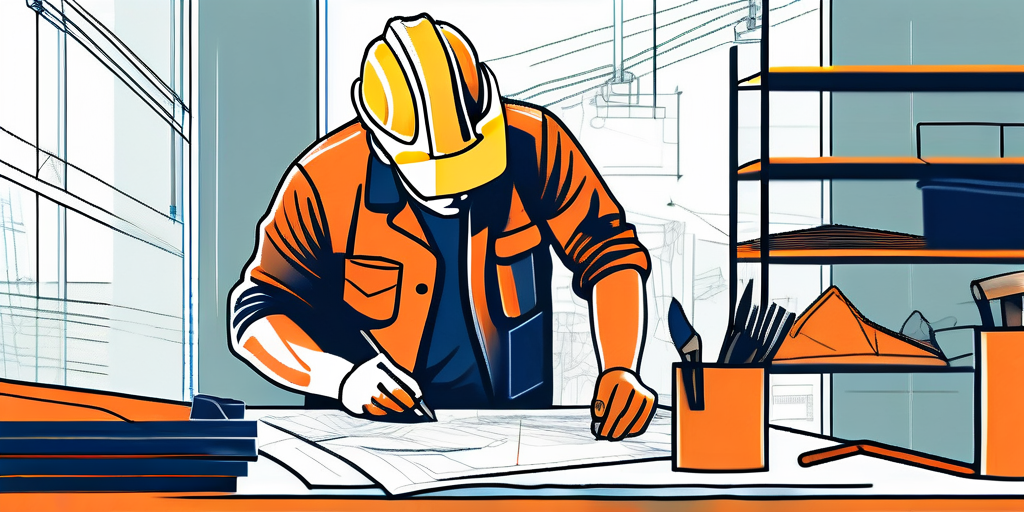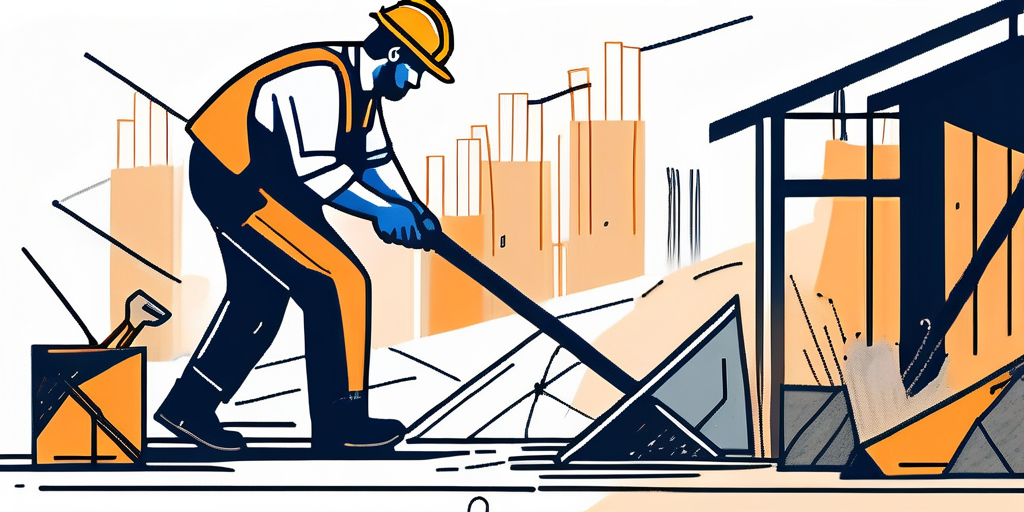In the world of construction, builders are the backbone of every project. Their expertise and experience play a crucial role in determining the success of a building endeavour. However, when left to their own devices, . This article dives deep into the mindset of builders and explores the impact of experience, training, and innovation on their choices.
Understanding the Mindset of Builders
Builders, like any other professionals, are shaped by their experiences. Over time, they develop a certain mindset that influences their decision-making process. The impact of experience on building choices cannot be underestimated.
Builders are constantly faced with a multitude of decisions when it comes to constructing a building. From choosing the right materials to selecting the most efficient construction methods, each choice has the potential to impact the outcome. It is through their experiences that builders gain valuable knowledge and insights that guide their decision-making process.
The Impact of Experience on Building Choices
Builders who have been in the industry for a long time often lean towards using methods and techniques they are familiar with. This comfort and familiarity come from years of completing projects using those methods. They have confidence in their abilities and trust that the tried-and-tested approach will yield the desired results.
For example, a builder who has successfully constructed numerous residential buildings using traditional brick and mortar may be hesitant to explore alternative construction methods such as modular construction. Their experience has shown them that the traditional approach works well and they may be reluctant to deviate from what they know.
On the other hand, less experienced builders may lack the confidence to step out of their comfort zone. They may stick to what they know as a way to avoid potential mistakes or failures. This mindset can limit their ability to explore new possibilities and hinder progress in the industry.
However, it is important to note that not all experienced builders are resistant to change, and not all less experienced builders are afraid to take risks. Some builders with extensive experience actively seek out new methods and technologies to stay ahead of the curve. They understand that the construction industry is constantly evolving, and embracing innovation is crucial for growth and success.
Furthermore, the mindset of builders is not solely shaped by their own experiences. They are also influenced by external factors such as market demands, client preferences, and industry trends. Builders need to stay updated with the latest advancements in building materials, sustainable practices, and energy-efficient solutions to meet the changing needs of their clients and comply with regulations.
In conclusion, the mindset of builders is a complex interplay between their own experiences, industry norms, and external influences. While experience can provide builders with a sense of confidence and familiarity, it is important for them to remain open to new ideas and innovations. By striking a balance between tradition and innovation, builders can continue to create structures that meet the needs of the present while laying a solid foundation for the future.
The Influence of Training on Builders’ Choices
Education and training play a crucial role in shaping the choices builders make. The knowledge and skills acquired through training programs can expand their toolbox and open doors to new possibilities. The relationship between education and building techniques cannot be ignored.

When it comes to the relationship between education and building techniques, builders who have received formal education in construction are likely to have a broader understanding of various building techniques. They have been exposed to different approaches and are more open to exploring new methods. Their training equips them with the knowledge needed to make informed choices.
However, it’s important to note that not all builders have had the opportunity for formal education. Many skilled builders have honed their craft through years of on-the-job experience. While they may lack theoretical knowledge, they make up for it with practical expertise. It’s a delicate balance between book smarts and hands-on skills.
How does training shape a builder’s toolbox? Training programs introduce builders to new tools, materials, and techniques. This exposure expands their toolbox, giving them more options to choose from when planning and executing a construction project. The more diverse the toolbox, the more likely a builder is to employ innovative solutions.
Continuing education is essential for builders to stay up-to-date with industry advancements. Attending workshops, seminars, and conferences can expose builders to cutting-edge techniques and inspire them to explore new possibilities.
Moreover, training programs not only provide builders with technical knowledge but also instil important values and principles. Builders who have undergone training are more likely to prioritize safety, sustainability, and efficiency in their work. They understand the importance of following regulations and guidelines to ensure the longevity and quality of their projects.
Furthermore, training programs often include modules on project management and communication skills. These skills are crucial for builders to effectively collaborate with clients, architects, and other professionals involved in the construction process. Builders who have received training in these areas are better equipped to handle complex projects and ensure smooth communication throughout.
Another aspect influenced by training is the ability to adapt to changing circumstances. Construction projects often face unexpected challenges, such as changes in design or unforeseen site conditions. Builders who have undergone training are more likely to have the flexibility and problem-solving skills to navigate these challenges and find creative solutions.
Training also plays a role in fostering a sense of professionalism among builders. By undergoing formal education or participating in training programs, builders are exposed to industry standards and best practices. This exposure helps them develop a professional mindset, ensuring that they approach their work with integrity, accountability, and a commitment to delivering high-quality results.
In conclusion, education and training have a significant impact on the choices builders make. Whether through formal education or on-the-job experience, training equips builders with the knowledge, skills, and values necessary to make informed decisions. It expands their toolbox, enhances their problem-solving abilities, and fosters a sense of professionalism. Builders who prioritize training are more likely to embrace innovation, adapt to changing circumstances, and deliver exceptional results.
The Dangers of Stagnation in Building Practices
While experience and familiarity can be advantageous, over-reliance on known methods can lead to stagnation in the construction industry. Builders must be aware of the risks associated with complacency and strive for innovation in their practices.

Building practices that remain stagnant can hinder progress and limit potential growth. When builders solely rely on what they already know, they miss out on the opportunity to explore new techniques and approaches that could revolutionize the industry. It is important for builders to constantly challenge themselves and push the boundaries of their knowledge and skills.
The Risks of Over-Reliance on Known Methods
Using the same methods repeatedly without considering alternatives can cause builders to miss out on more efficient or cost-effective approaches. They may become resistant to change and fail to adapt to industry advancements. This can result in projects that are outdated, less sustainable, and more expensive than they could be.
Moreover, over-reliance on known methods can lead to a lack of creativity and innovation. By sticking to what is familiar, builders may overlook innovative solutions that could greatly improve the quality and efficiency of their work. This can ultimately hinder their ability to meet the ever-evolving demands of clients and the industry as a whole.
The Need for Innovation in Construction
With advancements in technology, materials, and sustainable practices, there is a constant need for innovation in construction. Builders must embrace new ideas, techniques, and materials to stay ahead of the curve. The building industry has the potential to make significant strides if builders are open to exploring innovative solutions.
By embracing innovation, builders can improve the overall quality of their projects, enhance efficiency, and reduce environmental impact. For example, the integration of smart technology and automation can streamline construction processes, leading to faster project completion and reduced costs. Similarly, the use of sustainable materials and energy-efficient designs can contribute to a greener and more sustainable future.
Furthermore, innovation in construction can also lead to improved safety measures. By adopting new technologies and practices, builders can create safer working environments for their employees and ensure that projects are completed with minimal risk to all involved.
In conclusion, the construction industry must guard against stagnation by actively seeking out innovative solutions. By embracing change and exploring new methods, builders can stay competitive, improve project outcomes, and contribute to the overall advancement of the industry.
Encouraging Exploration of New Building Methods
To foster a culture of innovation in the construction industry, it is essential to encourage builders to explore new building methods. Continued learning and the adoption of new techniques can pave the way for transformative change.
Builders play a crucial role in shaping the built environment. Their skills and expertise are instrumental in constructing safe, functional, and aesthetically pleasing structures. However, in an industry that has traditionally been slow to embrace change, it is important to break free from the status quo and embrace new possibilities.
The Benefits of Continued Learning for Builders
Continued learning offers builders the chance to expand their knowledge, enhance their skills, and stay informed about the latest developments in their field. It allows them to break free from the constraints of familiarity and explore new avenues that can lead to improved efficiency and quality in their work.
By actively seeking out new building methods, builders can discover innovative ways to tackle common challenges. They can learn about emerging technologies that can streamline construction processes, reduce waste, and improve sustainability. Continued learning also enables builders to stay ahead of industry trends and adapt to changing demands.
Moreover, continued learning fosters a mindset of curiosity and adaptability. Builders who embrace lifelong learning are more likely to approach their work with an open mind, willing to experiment with new ideas and techniques. This mindset not only benefits individual builders but also contributes to the overall growth and progress of the construction industry.
Strategies for Introducing New Techniques to Builders
Introducing new techniques to builders requires a well-executed approach. Simply presenting builders with unfamiliar methods may not be enough to inspire change. Instead, a comprehensive strategy that addresses their concerns and highlights the benefits of new techniques is essential.
One effective strategy is to provide resources such as workshops, training programs, and demonstrations. These hands-on experiences allow builders to see firsthand how these new methods can benefit their work. By actively engaging in the learning process, builders can gain the confidence and skills necessary to adopt new techniques.
Collaboration with industry experts is another valuable strategy. By partnering with professionals who have successfully implemented new building methods, builders can gain insights and guidance. Sharing success stories and showcasing real-world examples can inspire builders to step out of their comfort zones and embrace change.
Furthermore, creating a supportive community of builders who are interested in exploring new methods can be incredibly beneficial. This can be achieved through networking events, online forums, or industry conferences. By connecting builders with like-minded individuals, they can exchange ideas, share experiences, and provide support to one another.
In conclusion, encouraging builders to explore new building methods is vital for the growth and innovation of the construction industry. Continued learning, combined with strategic approaches, can empower builders to embrace change, improve their skills, and contribute to the advancement of the industry as a whole.
The Future of Building: Balancing Old and New
As the construction industry moves forward, it is crucial to strike a balance between preserving proven methods and embracing change and innovation. Both old and new techniques have their place in building practices.

The Importance of Preserving Proven Methods
Proven methods have stood the test of time and continue to play a vital role in construction. Preserving these techniques ensures that builders have a solid foundation to build upon. It also provides stability and reliability, especially in areas where new approaches are yet to be fully tested.
One example of a proven method that has been preserved throughout history is the use of load-bearing walls. This technique, dating back to ancient civilizations, involves constructing walls that bear the weight of the structure. Load-bearing walls provide structural integrity and have been successfully used in various architectural styles, from ancient Egyptian pyramids to medieval European castles.
Another proven method that has been preserved is the use of traditional joinery techniques in woodworking. These techniques, such as mortise and tenon joints, have been used for centuries to create strong and durable connections between wooden components. By preserving these methods, builders can ensure the longevity and stability of wooden structures.
Embracing Change and Innovation in Construction
While honoring tradition is important, it is equally crucial to embrace change and innovation in construction. As builders push the boundaries and explore new possibilities, the industry as a whole can evolve and thrive. Embracing new methods, materials, and technologies can lead to increased efficiency, sustainability, and overall improvement in the quality of construction projects.
One area where change and innovation have made a significant impact is in the field of sustainable building practices. With the growing concern for the environment, builders have been exploring new ways to reduce the carbon footprint of construction projects. This has led to the development of eco-friendly materials, such as recycled steel and reclaimed wood, as well as the implementation of energy-efficient designs and renewable energy systems.
Another example of embracing change and innovation is the integration of digital technologies in construction. Building Information Modeling (BIM), for instance, allows builders to create 3D models of structures, enabling better visualization and coordination among different stakeholders. This technology has revolutionized the construction process, improving communication, reducing errors, and increasing productivity.
In conclusion, builders left to their own devices tend to rely on what they know best. Experience, training, and the mindset shaped by these factors greatly influence builders’ choices. However, it is essential to break free from the confines of familiarity and embrace new methods and techniques. By encouraging continued learning and fostering a culture of innovation, we can ensure that the construction industry keeps evolving and reaching new heights.
As we embrace the future of building, balancing the wisdom of proven methods with the excitement of innovation, consider the sustainable solutions offered by Diasen. Their Diathonite line, a blend of natural cork, lime, and clay, addresses thermal bridging and insulation challenges while also tackling damp problems. With Diasen’s green building materials, you can enhance your construction projects with superior thermal and acoustic performance, all while contributing to a healthier environment. Take a look at these products and join the movement towards energy-efficient and sustainable building practices.

